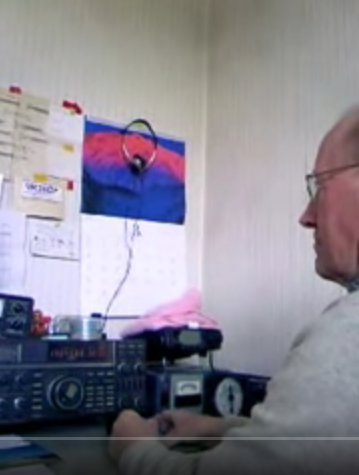At our 16 February meeting, James ZL2ET gave us an interesting talk on WSPR (pronounced “whisper”) and its applications.
Doug ZL2AOV summarised it as:
“James ZL2ET discussed the challenges and possibilities involved in low-power, very low-speed propagation testing. WSPR (Weak Signal Propagation Reporter) is a computer-driven way to find out which bands are open, when and between what sites; it correlates this data and provides it on-screen.
“Using a presentation prepared by Steve Nichols G0KYA, James took us through the equipment needed: a computer with a sound-card to generate the slow-speed FSK used, a transceiver with accurate and stable frequency control, a source of accurate time (propagation paths are found by comparing accurate time slots of data), and an internet link to upload the data to a central repository for automatic analysis and dissemination. Viewers can see what’s going on by pointing their web browsers at www.wsprnet.org. The files can be analysed by band, time, and even by transmitter source … allowing insights into amateur radio DX prospects.
“Transmitters don’t want to be high-powered (maximum five watts is fine) and milliwatts is possible. A Raspberry Pi model B can be programmed to provide FSK on a preferred frequency at about 10 milliwatts out; an amp can push that to 100milliwatts and a tiny bandpass filter does the rest. Timing accuracy can be guaranteed using a wi-fi usb stick to synch to external clocks.
“The protocol provides for transmission of callsign, locator square, power output (in dBm) for 100 seconds, then listening for 120 seconds. Transmission is FSK, just six Hertz.
“The designer of it all? Professor Joe Taylor K1JT, well known for other innovations in digital modes. The system’s sensitivity is stated to be between 11dB and 15dB better than the human ear. That’s way better than using PSK31 and searching for the characteristic double-lines in the waterfall display!!!!”

 Out came the steaks, chops, chicken kebabs, salads, and cake at the annual summer BBQ at the QTH of club chairman, Mike ZL1AXG, on 20 January 2016. Attendance was similar to previous years, but several XYLs came along for the first time.
Out came the steaks, chops, chicken kebabs, salads, and cake at the annual summer BBQ at the QTH of club chairman, Mike ZL1AXG, on 20 January 2016. Attendance was similar to previous years, but several XYLs came along for the first time.
